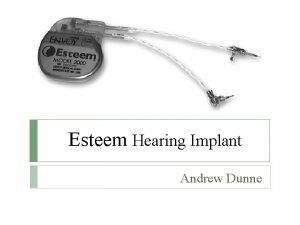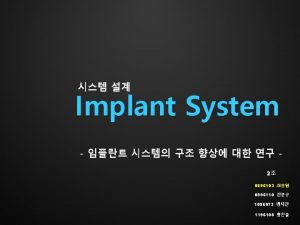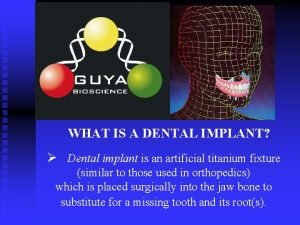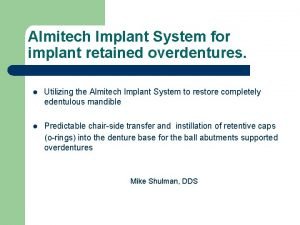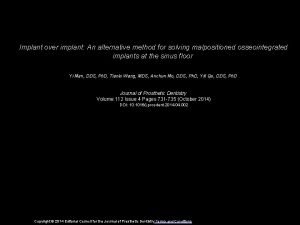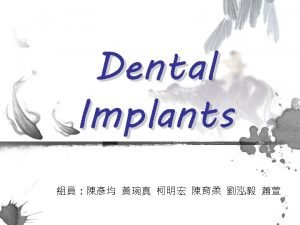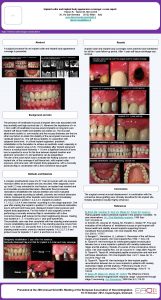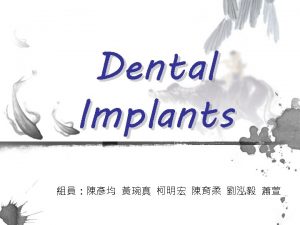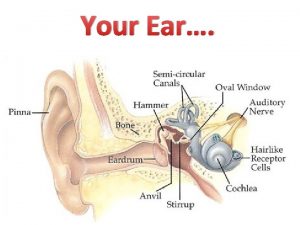Esteem Hearing Implant Andrew Dunne What is Esteem










- Slides: 10

Esteem Hearing Implant Andrew Dunne

What is Esteem? A totally implantable hearing system that is implanted under the skin behind the ear and within the middle ear space For moderate and severe sensorineural hearing loss Sensorineural hearing loss -- Loss of hearing resulting from problems in the inner ear, the cochlear nerve, or in the brain. Has no microphone Uses the functioning eardrum to pick up vibrations Adjusts vibrations to individual hearing needs Pacemaker like battery Needs replacement after 4. 5 to 9 years of continuous use. battery replaced in a minor outpatient surgical operation.

Parts Two piezoelectric transducers implanted in the middle ear Sensor – surgically attached to incus Driver – attached to stapes Sound Processor Implanted behind the ear in a boney well Hold battery Personal Programmer Turns Esteem on/off Select volume levels Three program settings

How it works I Sound travels down ear canal and vibrates eardrum Sensor Picks up vibrations from incus. Converts vibrations into electrical signals which are sent to the sound processor. Processor The digital signals are modified depending on patients individual needs Determined by variety of hearing tests

How it works II Driver Converts the new electrical signals into mechanical vibrations. Transmits these signals to the stapes and the cochlea Sound Processor Driver Sensor Incus and Stapes surgically separated to prevent feedback.

Study began in 2007 Esteem implanted in 6 patients 5 right ear, 1 left ear Hearing tests before, after surgery, after activation Duration of surgical procedure varied First – 8 h 10 min Last – 3 h 50 min Average – 5 h 45 min Implant activated 2 months afterwards

Results 3 of the 6 patients had implant activated. Reasons were not discussed Audiometric results Mean (250 -4000 Hz) actual hearing gain as compared to preoperative hearing threshold Patient 1 – 26 d. B Patient 2 – 9 d. B Patient 3 – 11 d. B Mean actual hearing gain compared to postoperative hearing threshold Patient 1 – 65 d. B Patient 2 – 41 d. B Patient 3 – 61 d. B

Issues / benefits Long surgical procedure with steep learning curve Highly Invasive surgical procedure Interruption of the ossicular chain Causes additional hearing loss initially Completely invisible to self and others No acoustic feedback Maintenance free

Approval Earned the CE mark of approval FDA approved on March 17, 2010 Direct cost to the recipient for device and implant surgery is approximately $30, 000. Financing options are available.

References Barbara, M, Manni, V, & Monini, S. (2009). totally implantable middle ear device for rehabilitation of sensorineural hearing loss: preliminary experience with the esteem®, envoy. Acta Otolaryngologica, 129(4), 429 -432. http: //www. envoymedical. com/get-informed http: //www. medgadget. com/archives/2010/03/envoy_estee m_first_totally_implantable_hearing_system_gains_fda_a pproval. html
